Apr 27 2017
Wednesday – a row in the coxless four
Wednesday is our Masters evening. Of course the Masters rowers of our rowing club do more trainings, but on Wednesday at 6pm we gather and row in the eight.
On this particular rainy and cold Wednesday evening, the turn-up was 5 rowers, and a sixth one called us at exactly 6pm, saying that he was “just now” leaving office. That office being just 45 minutes away in the peak hour traffic. 🙁
To at least do something that resembles rowing in an eight, we decided to pick a coxless four. The fifth guy decided to stay on the erg and wait for the sixth guy.
I rowed in bow seat, and the rest of the crew consisted of Martin “Krocan” (=Turkey), Petr “Bulda” (=Bulldog) and Michal “Míša” (=Bear). So we had a rich representation of the animal kingdom.
The boat was an old Empacher 4-, and we lost 15 minutes because we had to replace the shoes so that Bulda would fit into the boat.
I didn’t really fancy rowing on the bow seat, but I guess being the lightest of this crew (with 75kg, compared to Bulda’s 113kg), it had to be me. I like practicing my sweep rowing, but it takes more of my mental effort to do it well, compared to sculling. You can imagine that I did not have the need to also turn around every few strokes and scan the lake for upcoming traffic. Well, so be it.
All our boats are foot steered from the stroke position, so at least I didn’t have to do the steering. And Míša is one of our rowers who can steer our lake with a blindfold, so the course was always right and I just had to watch out for the traffic.
This was a technical training, so we did a lot of drills.
Some of the drills involved rowing with stops at various places. You can see that the SpeedCoach didn’t really understand that.
It was cold and rainy, but we did make a lot of progress during this short outing. It was fun to row something else than a single, and it had been a long time since I last rowed a coxless four.
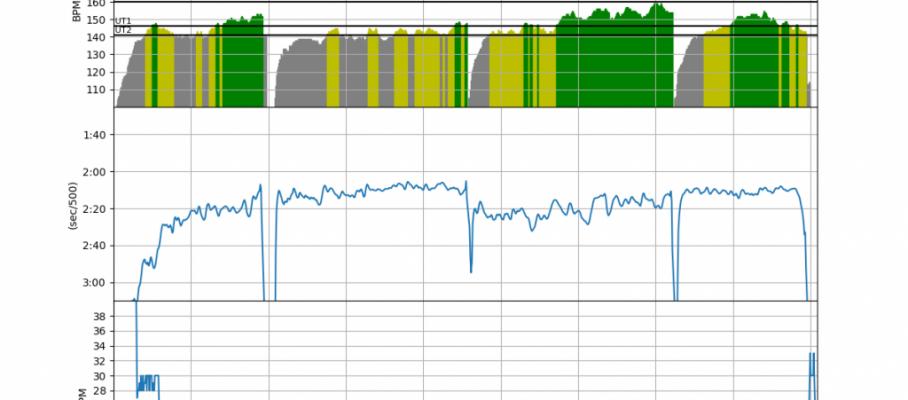
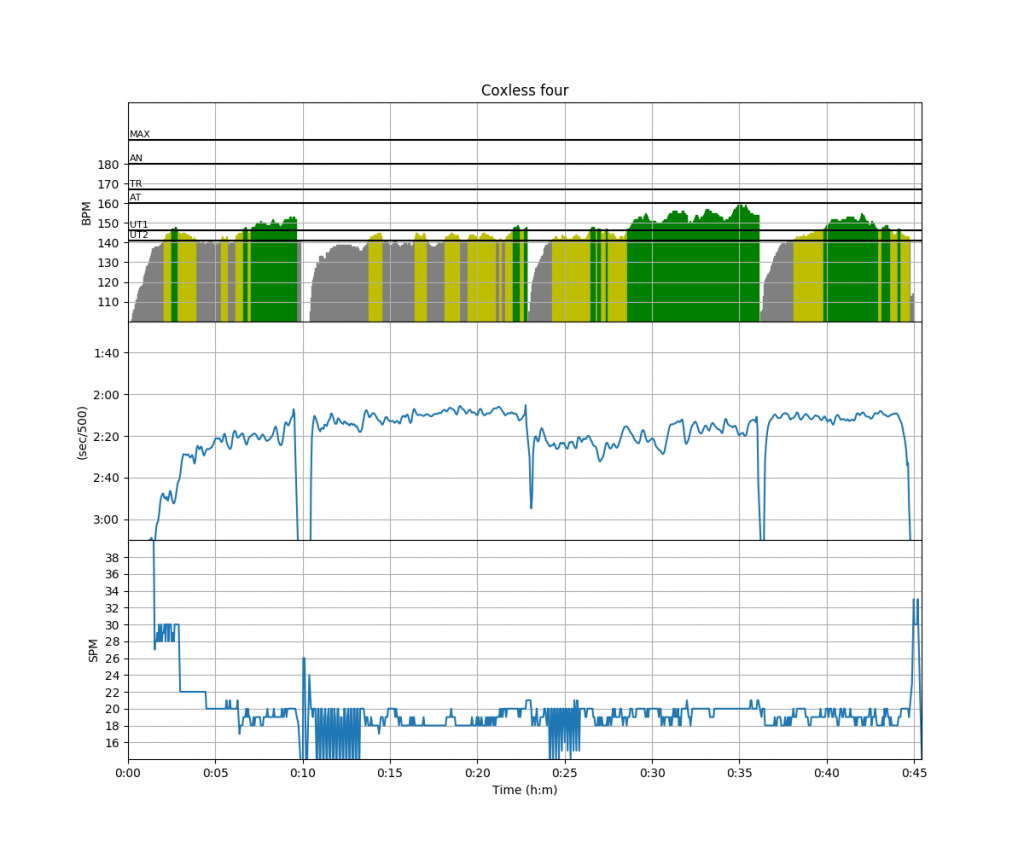
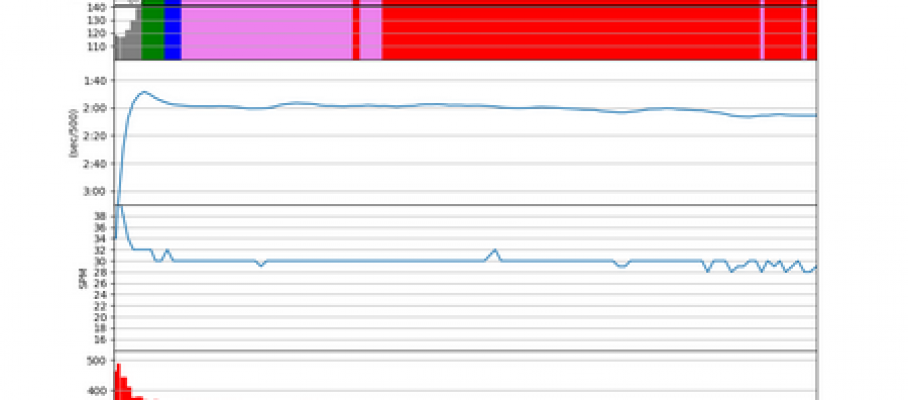
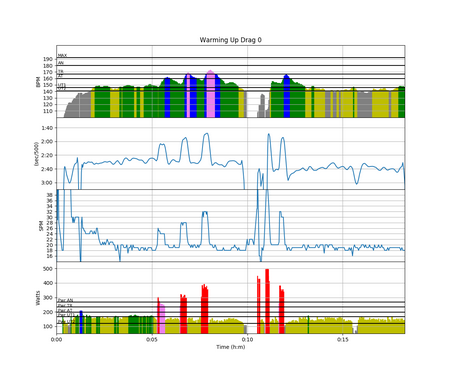
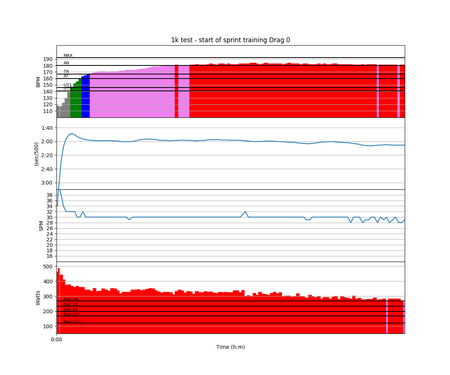
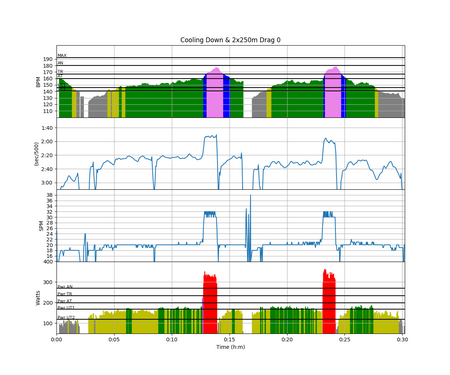
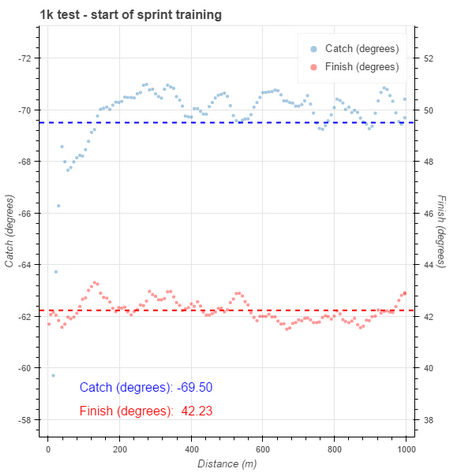
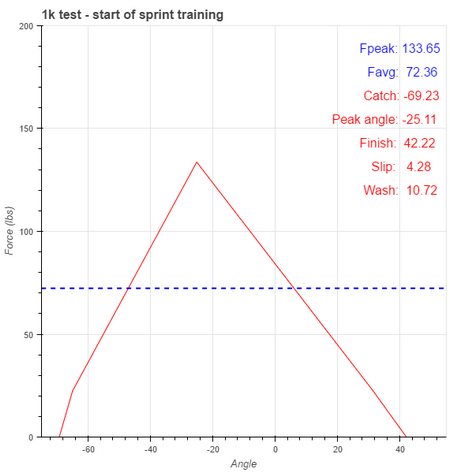
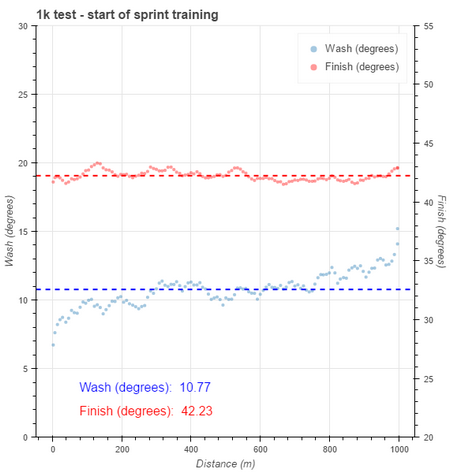
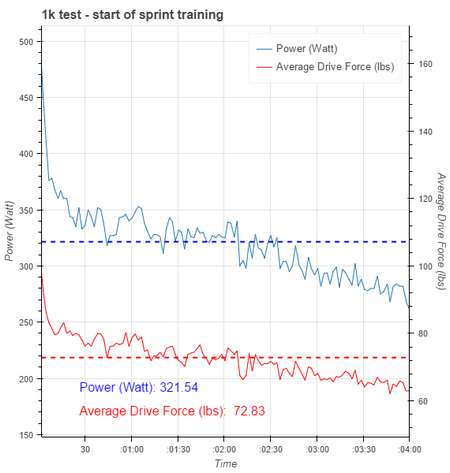
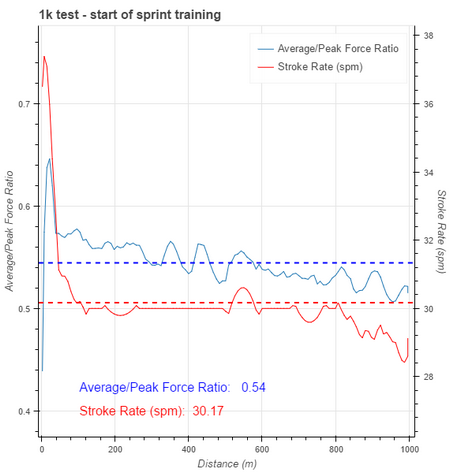
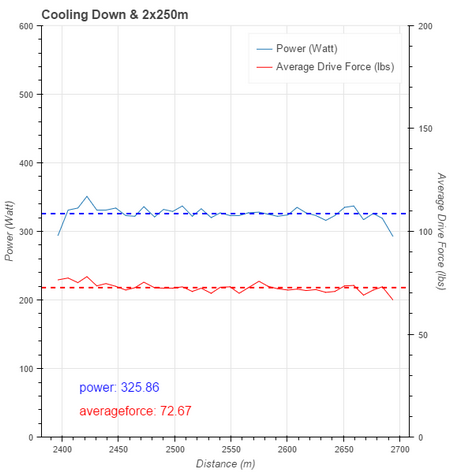
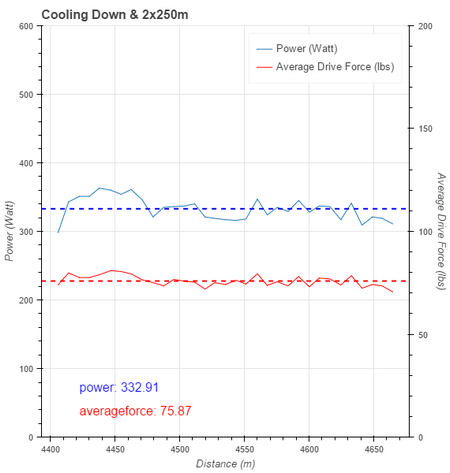
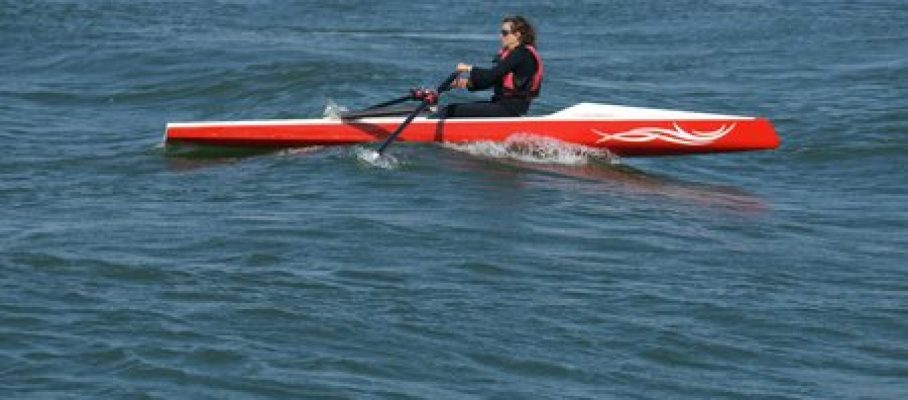

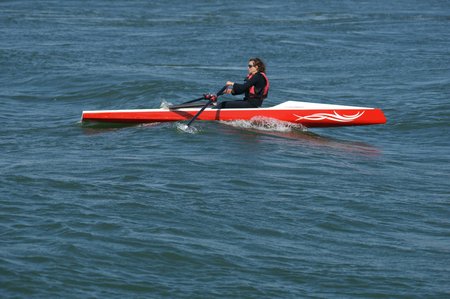
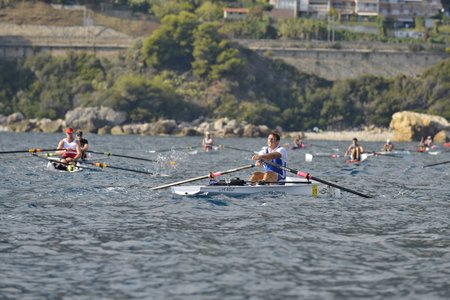
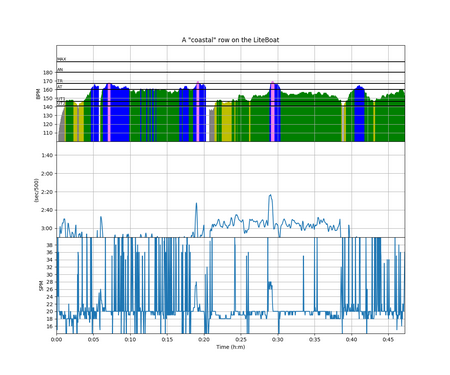
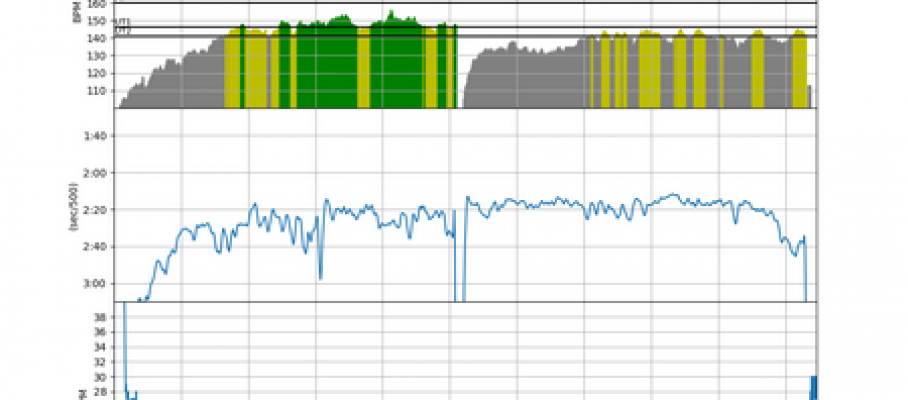
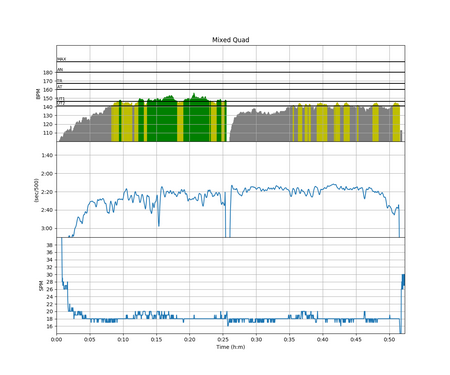
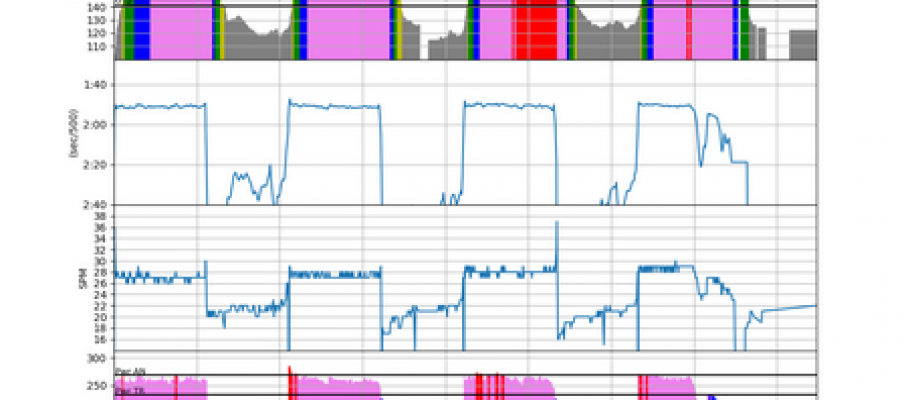
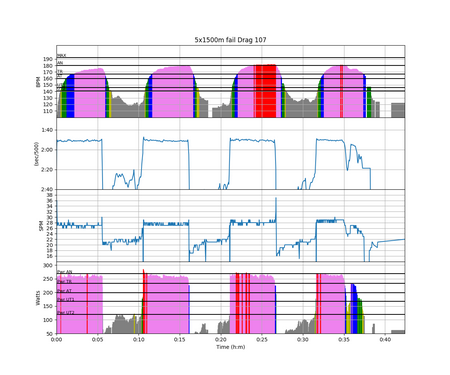
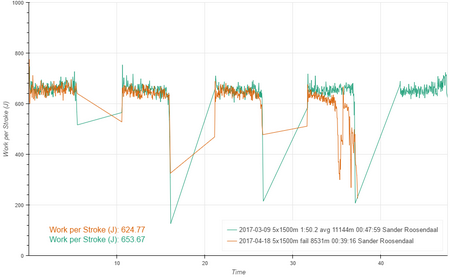
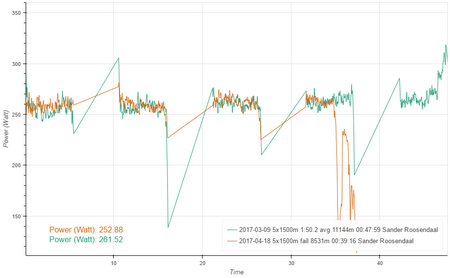
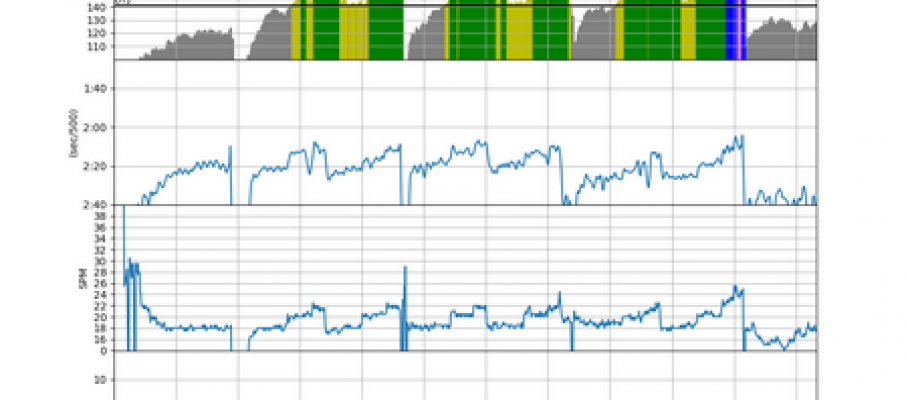
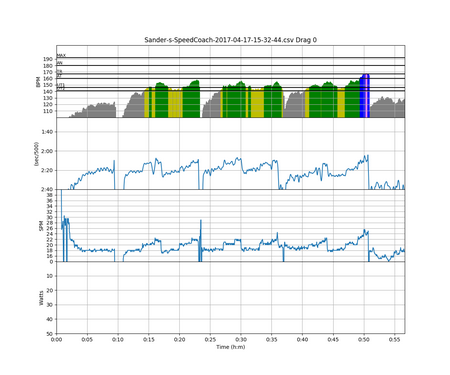
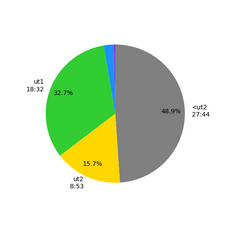
Apr 27 2017
Thursday morning – 36 intervals in the single
From a rowing technology blogger’s standpoint this was really a session I was looking forward to.
It wasn’t to be. Sometimes the NK SpeedCoach’s user interface drives me crazy. I am 100% sure that I have recorded the row, but somehow I have managed to delete it on the device, perhaps when I switched it off. Anyway, when it was time for me to sync the unit with the PC, I was surprised to see no new session.
It’s really a pity, because this morning’s session was:
6x(6×15 strokes “on”/10 strokes “off”)/5min, with the 15 “on” strokes at 26, 28, 30, 32, 34 and 36spm.
The idea was really to learn (again) to row at high stroke rates and to transfer boat feel and stroke efficiency from the 26spm all the way up to 36spm.
I set the SpeedCoach to show power, stroke rate, effective length and wash during the row and all the time I was looking forward to doing the data analysis. I wanted to see how wash and effective length, as well as work per stroke, would hold up at the higher rates, and uncover other hidden information from the data.
So if I want to row a 1k race at 320W and 32spm, probably all my strokes should be around 10W/spm, i.e. I should row the 26spm bit at 260W, the 28spm bit at 280W, etc. This is what I tried during the row.
It was a cold and rainy morning. Four degrees C, and something between snow and rain when I drove to the rowing club. When I launched, the rain had stopped, and it turned out to be a gray and cold but fantastic morning.
The swallows were heaving breakfast, and it was a joy to see them. At these temperatures, they fly just above the waves, about the same height as a rower’s blade between strokes, and they are such fantastic flyers. I really enjoyed how efficiently they glide through the air, only occasionally reverting to high wing frequency flying, when hovering to catch insects or gaining speed in headwind conditions. I made a mental link to my rowing, doing the 26spm as the swallow glides and the 36spm as it hovers.
As said, I failed to save the session on the SpeedCoach, so you will have to do with the pictures from the Garmin watch, imported through Strava. Strava magically added some power values through a biking/running plugin, so you shouldn’t take those too seriously (although the values are pretty good). The SPM values were all over the place but that is because the Garmin tried to measure running cadence.
Sets 1, 3 and 5 were rowed in tailwind. Sets 2, 4 and 6 were rowed in headwind. As the sets progressed, I became better and better at hitting the right Power values and I think I learned a lot from this session, even though it almost feels like I didn’t do it, not having any data.
With the swallows and all, definitely a session I enjoyed a lot. It was hard, it wasn’t short, but it was 100% worth it.
By sanderroosendaal • Uncategorized • 1 • Tags: ANC, ANC training, lake, OTW, rowing, single, training